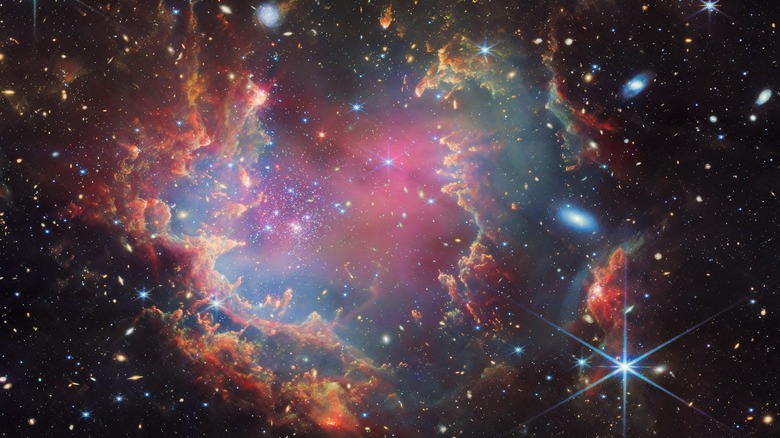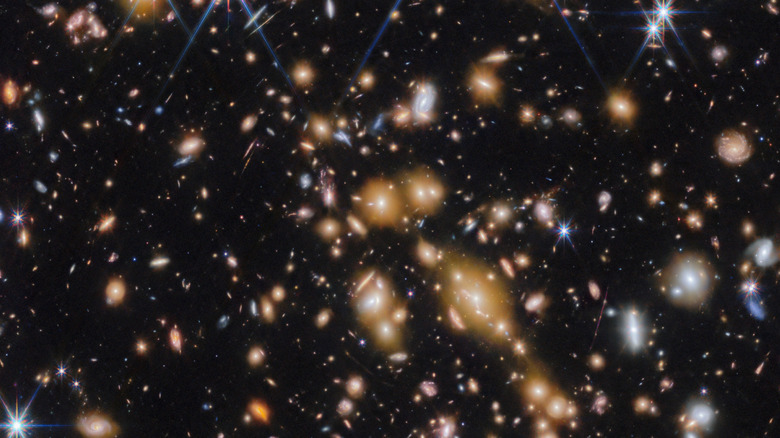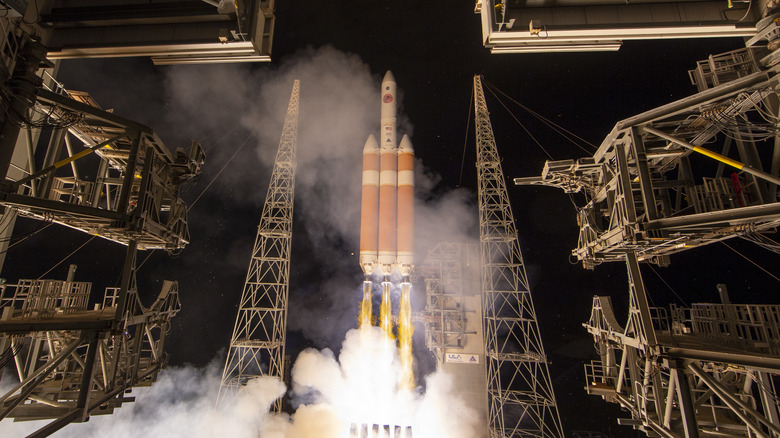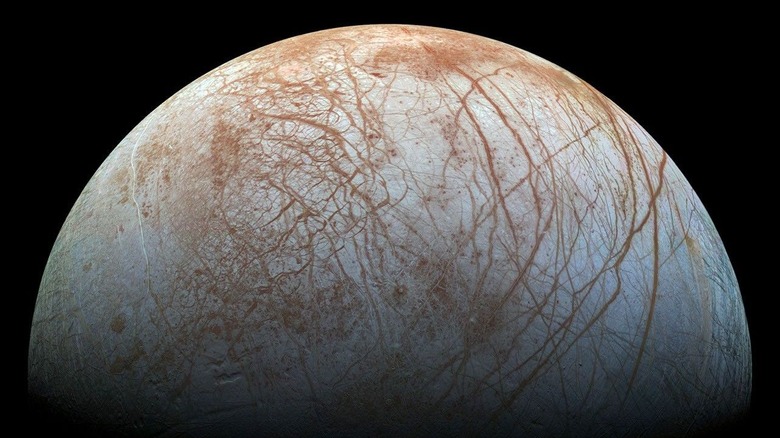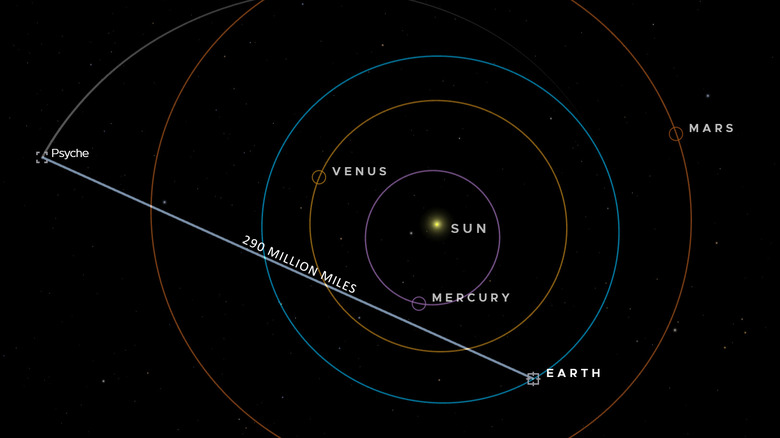5 Times NASA Broke Records In 2024
The final frontier of the cosmos represents the ultimate scientific endeavor, one that's aimed at answering the most profound and meaningful questions humanity can ask. And every year, scientists at space agencies around the globe push the curtain of unknowing back just a little bit further to help humanity understand our place in the universe.
2024 was no exception. In fact, given the increase in investments in private aerospace companies and space launches across the globe in recent years, it wouldn't be extreme to say that there's never been a better and more prolific period in history for exploring the universe and unraveling its mysteries. And to this end, NASA remains the gold standard (here's what NASA stands for and what the agency actually does, if you need a refresher).
This year saw the space agency make humbling breakthroughs and smash records on a literal astronomic scale. New galaxies were discovered, laser communications were beamed across the solar system, and entirely new interplanetary missions were launched. The scale, the stakes, and the beauty have never been higher. Here's the cosmic year in review, showcasing five times NASA broke records and established impressive firsts in 2024.
James Webb discovers the earliest galaxies in existence
Since the launch of NASA's James Webb Space Telescope (JWST), the agency has made several profound discoveries and put out some of the most stunning images of galaxies and nebulae that exist. In 2024, the telescope again pushed the boundaries of our understanding of the universe by identifying five candidate galaxies that could be the earliest ever observed.
These galaxies, estimated to have formed a mere 200 million years after the Big Bang, challenge existing models of galaxy formation and provide insights into the infancy of the universe. Researchers determine the age of such galaxies by looking at their amount of redshift — a phenomenon in which galaxies moving away from us have their light waves stretched so much that they shift toward the red end of the visible spectrum. Researchers correlate these shifts with "z" values, with a z value of 1, for example, meaning that light from an object has been traveling around 7.7 billion years. The higher the z value, the longer light has been traveling, and the older that object in space is.
In 2022, researchers used JWST observations to identify two galaxy candidates at z values of 16, putting their formation at around 250 million years post-Big Bang, some of the earliest identified up to that point. This new research, however, gives its candidate galaxies z values between 15.9 and 18.6, meaning they are potentially the furthest back in time human eyes have seen galaxies existing. The discovery was announced in a preprint of a research paper published on arXiv, which means it has yet to be peer-reviewed. However, if confirmed, these findings could challenge scientific predictions on galaxy formation made before JWST's launch, highlighting just another benefit of the telescope's contributions to our knowledge of the universe.
NASA's Parker Solar Probe skirts by the Sun
On September 30, 2024, NASA's Parker Solar Probe set a new record by skirting within 4.51 million miles of the Sun's surface during its 21st close approach before returning to Venus (and while we're in this part of the solar system, check out why Venus has an unusual number of moons). This milestone brought humanity closer to our star than ever before, cementing the spacecraft's place in history as the closest human-made object to the Sun.
The close approach, which is known as a perihelion, took the spacecraft around the Sun at 394,700 mph, matching its existing speed record as well. Once the mission was completed, the solar probe checked in with mission operators at the Johns Hopkins Applied Physics Laboratory in Maryland via a beacon tone, signaling its systems were functioning normally.
But the probe's record-breaking feats aren't over. On December 24, 2024, the Parker Solar Probe made another daring pass, flying just 3.8 million miles from the Sun's surface. At its peak, the spacecraft traveled at nearly 430,000 mph — fast enough to get from Philadelphia to Washington, D.C., in just one second. During the pass, the probe's heat shield reached temperatures of up to 1,800 degrees Fahrenheit while keeping its instruments at a cool 85 degrees.
NASA launches its first mission to Europa
On October 14, 2024, NASA launched its groundbreaking Europa Clipper mission, marking humanity's first dedicated effort to study Jupiter's icy moon Europa. Departing from Launch Complex 39A at the Kennedy Space Center in Florida aboard a SpaceX Falcon Heavy rocket, the spacecraft embarked on a journey that will take six years, arriving at Europa in 2030 (here's how long it would take to get to Jupiter on our fastest manned rocket).
Europa has fascinated scientists for decades due to its potential to harbor life. Beneath its thick crust of ice, the moon is believed to contain a vast ocean of liquid water — possibly twice the volume of all of Earth's oceans combined. This subsurface ocean, warmed by tidal forces, could possess the chemical ingredients necessary for life as we know it (check out this explainer on the unexpected place we found water beyond Earth for a refresher on the search for life in the solar system).
With its advanced suite of nine scientific instruments — including ice-penetrating radar — Europa Clipper will analyze the moon's surface, atmosphere, and internal structure, all while being powered by the largest solar array NASA has ever sent on an interplanetary mission.
NASA's deep space laser breakthrough
On July 29, 2024, the Deep Space Optical Communications (DSOC) experiment set a new standard for space communication by successfully sending a laser signal from Earth to NASA's Psyche spacecraft, a breezy 290 million miles away — the same distance between Earth and Mars when the two cosmic bodies are farthest apart from each other in their orbits.
Having launched aboard the Psyche spacecraft in October 2023, DSOC demonstrated its ability to send and receive data via lasers over unprecedented distances, breaking all previous deep-space records in its first operational phase. Scientists used tightly focused laser beams to communicate with the spacecraft from the uplink station at NASA's Optical Communications Telescope Laboratory in Southern California.
Laser communication enables data transmission rates up to 100 times higher than traditional radio waves. That means the ability to quickly transfer complex scientific communications — including high-definition image and video content — during missions. As the data sent to and from Psyche are encoded in near-infrared light, the high-frequency wavelength allows for data transmission between the uplink station and the spacecraft at a maximum of 267 megabits per second, similar to broadband internet download speeds. Though communication speeds will decrease as the spacecraft travels farther out into space, the demonstration gives researchers hope for the possibility of more effective data transfers on future crewed missions to Mars and beyond.
James Webb enables a new view
In June, NASA's James Webb Space Telescope (JWST) captured a breathtaking image of the Serpens Nebula, a star-forming region located 1,300 light years from Earth. The telescope's imaging capabilities helped scientists gain a window into something many have long desired to image directly for the very first time — jets of gas emanating from newborn stars that collide with dust particles at high speeds.
These protostellar outflows, as they're known, tend to be oriented in a variety of ways within any particular star-forming region. In the Serpens Nebula, however, these gas jets are all leaning in a single direction and at the same angle, a phenomenon that has puzzled observers. Webb's unparalleled spatial resolution and near-infrared camera (known as NIRCam) allow scientists to see past thick clouds of dust obscuring some of the nebula's features, an ability that is providing scientists with valuable information on how stars form. A team of researchers has published a study on the gas jet outflows based on the image, whose preliminary results have been accepted by Astrophysical Journal.
"This area of the Serpens Nebula — Serpens North — only comes into clear view with Webb," lead author Joel Green of the Space Telescope Science Institute in Baltimore told NASA. "We're now able to catch these extremely young stars and their outflows, some of which previously appeared as just blobs or were completely invisible in optical wavelengths because of the thick dust surrounding them."
